Know Mosquito, Shape Body Structure and Cycle Her life
Mosquito
Mosquitoes including cosmopolitan insects that can be found all over the world ranging from the polar regions to the tropics. Mosquitoes included in the subfamily culicinae, family culicidae. The number of mosquitoes in the world reached more than 2960 species and 457 species.
Mosquitoes are insects parasites (ectoparasites) in the form of a slim, good body, wings and proboscis. Proboscis is a tool for piercing and sucking plant fluids or blood. Mosquitoes consists of three important subfamilies, namely:
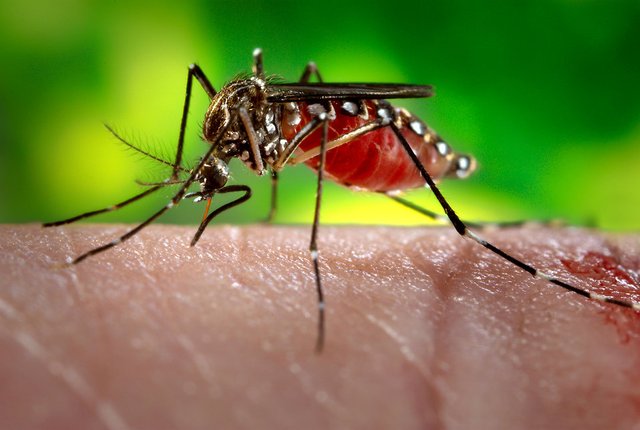
Source photos: freestockphotos.biz
- Subfamily Toxorhynchitinae example Toxorhynchites splendens, Tx. amboinensis
- Subfamily Culicinae example Aedes aegypti, A. albopictus, Culex pipiens quinquefasciatus, Mansonia Uniformes, Armigeres subalbatus,
- Subfamily Anophelinae example Anopheles aconitus and An. Sundaicus. The discussion in this book only on mosquitoes commonly found in many settlements, namely Aedes, Culex and Anopheles.
Body Structure Mosquitoes
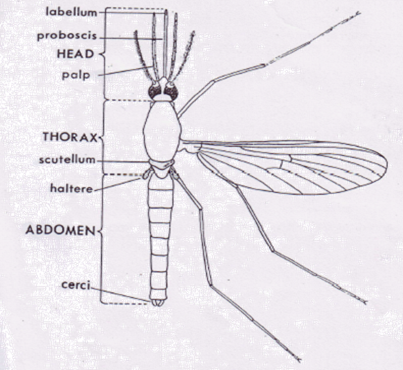
Adult has a body length of 3-6 mm, slender, long legs, have two pairs of wings, a pair of hind wings modified into a halter that has the function to maintain balance during flight. Type mosquito piercing and sucking mouth. Adult has long antennae (filiform) and trim consists of 15 segments. Antenna slightly haired female mosquitoes called antenna type pilose. While the males have a lot of hair, called the plumose type antenna. Thorax is covered by scutum on the dorsal, is equipped with three pairs of legs are long and slender. Colors, patterns of scales and hairs on the thorax is useful to distinguish the genus and species.
Subfamily Culicinae (Culex and Aedes):
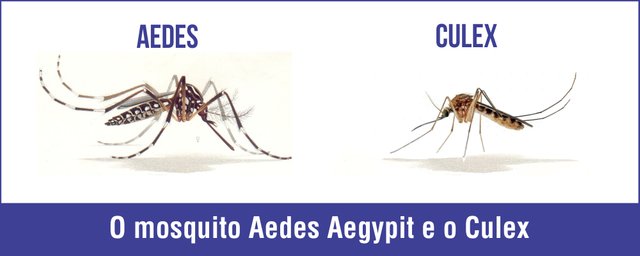
Source photos: sociedadepublica.com.br
Adult mosquito Aedes has skutelum trilobus (curved three) at the end of the thorax. Maxillary palpi shorter than half the length of proboscis. Mosquito alighted horizontal position. Adult Aedes mosquitoes are smaller than house mosquito (Culex quinquefasciatus). A. albopictus mosquito has the same body structure with A. aegypti that is on the abdomen and the legs have a black base color with white streaks but have a difference in the mesonotum overgrown by scales smooth white color which forms a thick white line elongated called lira (lire-shaped ornament). Lira in A. aegypti is black with two white strips parallel in the dorsal middle flanked by two curved lines are white. While lira A. albopictus is also black just contain a thick white line at the dorsalnyaTubuh larvae are often covered with hairs hard long (tufts of bristles). The larvae have a siphon located at the tip of the abdomen as a breathing apparatus. On the Culex, chiffon slim shape and length. While on Aedes chiffon short and rounded shape. Culex eggs laid on the surface of the water in the raft with the number of eggs a lot. Aedes eggs were placed one by one on the wall of the container above the waterline.
Subfamily Anophelinae (Anopheles)
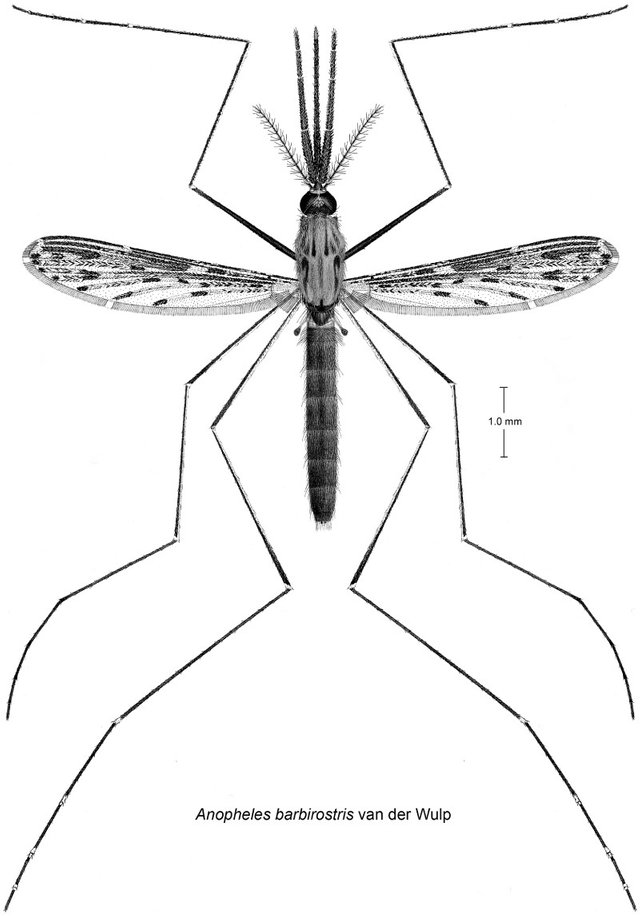
Source photos: www.researchgate.net
Adult Anopheles mosquitoes have skutelum rounded. Maxillary palpi have the same length as the proboscis, the male palpi enlarged end (club-shape). Palpi flanged pale or not at all flanged and has a long, slender legs. While the characteristics in particular are flanged palpi pale, veins wings had dark stains and pale, tassels sometimes pale or dark stained at all and on the back foot often there are spots. Different from the female Anopheles mosquito Anopheles mosquito males. Both have a characteristic that is easily recognizable. Antenna female Anopheles mosquito has a branch that is thinner than the antenna of Anopheles male and female Anopheles mosquito body size is larger than the male Anopheles mosquito.
The position of adult mosquitoes landed on the surface menungging or an angle. The larvae do not have chiffon, on the right and left abdominal segments are palmate hair and the dorsal part of each segment are pieces tergal. Eggs are laid on the surface of the water one by one and on the right and left of the eggs contained a float of chorionic squiggly lateral.
Life Cycle Mosquito (Aedes, Culex and Anopheles)
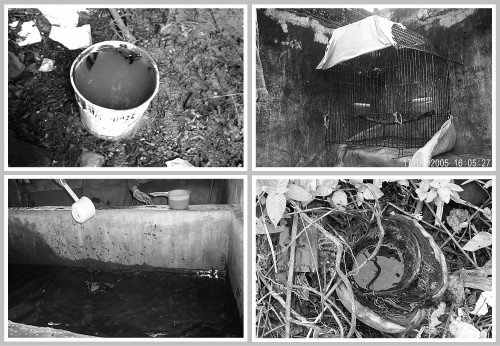
An effort to ensure the success of the control of insect pests settlements or vector-borne diseases mosquitoes and flies the necessary knowledge about the biology of the insect. Based on the biological information of a circuit known weak point of their life cycle can be targeted for control. The biological information includes the characteristics of each stage of the life cycle stages, namely egg, larva, pupa and imago.
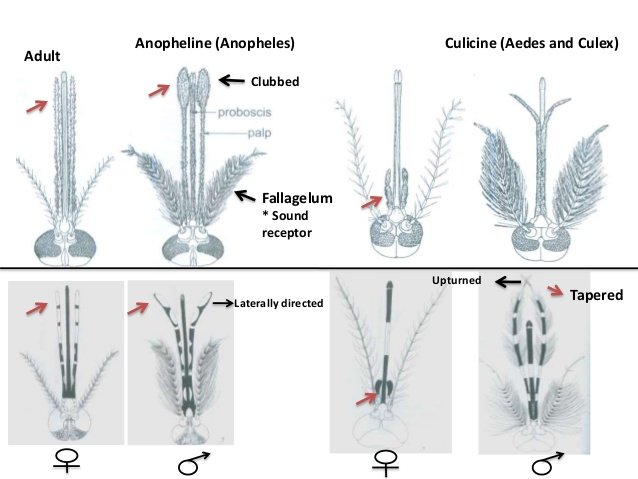
Source photos: www.slideshare.net